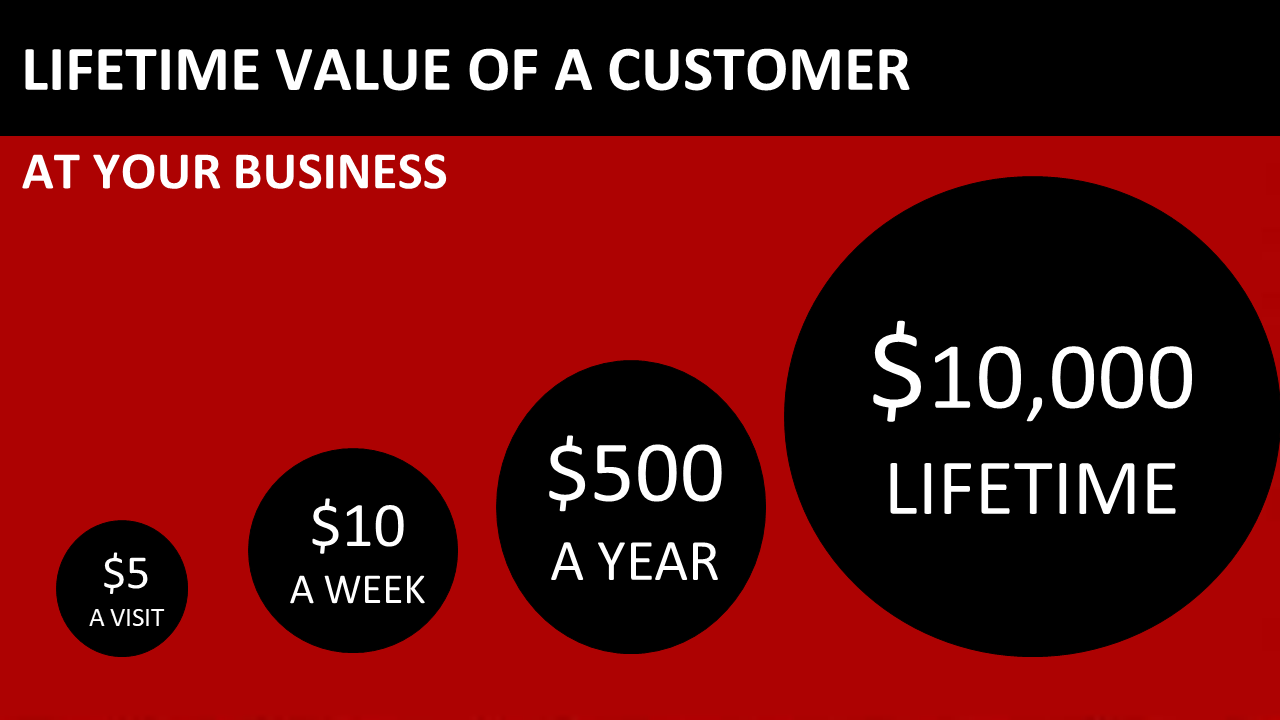“Do good Karma and good Karma will come to you” was my grandma’s advice as I grew up in India. Hidden in that advice was the mantra for building lifetime relationship with customers.
The key word is relationship, as there are similarities between personal and customer connections. In both cases the first impression defines the tone of the connection and a decision is made about the future before the connection is over. If you will never use a coupon to promote your dating profile, why do brands use billions of coupons daily to buy a customer’s business?
With this understanding, businesses of all sizes should focus on one customer at a time to create a great first impression and focus on making every part of the experience for a guest matter. That way the guest can decide favorably about doing future business before leaving. This focus on one customer at a time, is very powerful and will make a strong impact on the brand’s revenue.
Here is an example from a business where an average customer spends $5 every time and visits twice a week.
Once you do the math, the customer has a $10,000 lifetime potential. That itself changes the way we look at every customer. That is powerful. I was blown away when I first realized the power of one customer and how it can make a business very successful. It is so simple yet a game changer.
As you think of applying this in your business, here are the two questions you should ask about your typical customer:
- How much does he/she spend every time?
- How many times a week or month do they do business with you?
That will allow you to develop the value of each customer over a 10-year period. Then simply treat the customer every time as a $10,000 customer instead of a $5 customer. That is all it takes. And of course, with this approach you will never need to spend a single dollar on marketing as the repeat visits and referrals will grow your business.
The essence of the book Customer Karma is to focus on one customer at a time and focuses on the three steps in the journey.
1. LEARN: What the customer needs by putting in the customer’s shoes. In the business world, often it becomes “us vs. them” when looking at customers. We often feel that the customer is unreasonable or wrong. During my corporate days, I always blocked time on my calendar to play “the customer”. I would visit my own stores and visit key competitive stores as a customer. This would help me truly feel the pulse of the customer and get an understanding of how my competition was different in serving the same customers we were all competing for.
In 1996, I was working for Papa John’s as VP of Marketing and Operations Services, being a customer made me realize that 90% of customers call on the phone to order a pizza and nearly all of them are put on hold. 20% of the calls get dropped while being on hold. That was the problem with all major pizza brands. Feeling the pain of the customer every time I “played customer” made me realize that this is a big problem for the customer and if we at Papa John’s solve this, we will be rewarded by the customer. That insight gave birth to Papa John’s Online, the first ever online pizza ordering. It was a big customer win and because of that, today Papa John’s online business generates more than a Billion Dollars a year.
2. SEE: The big picture of the lifetime value of the customer. Seeing the big picture makes one appreciate the importance of each customer. So instead of trying to serve as many customers as possible in a fixed amount of time, the focus changes to serving each customer to perfection. Most call center organizations measure their employee’s performance by the average length of the phone calls, where one with the lowest average is the winner. Is that what the customer wants? Does the customer want to be rushed or expect patient listening before solving the problem? Seeing the lifetime value makes it important to listen patiently to every customer, every time, and do the best to solve the problem.
3. ACT: From the heart. As customer relationships is like everyday relationships, it is important to act from the heart. You may smile at your guest, you may say thank you; but remember those words do not connect to the customer unless they come from your heart. A customer had once told me that when she visited a certain restaurant with her family of 6, she could read behind the smile of the greeter the following secret message, “There they are, the pain in the butt family.” Because of this and only this, she stopped visiting the restaurant.
Start your journey by simply wowing one customer, and then one more; and your business will never be the same.
Find a Home-Based Business to Start-Up >>> Hundreds of Business Listings.
















































